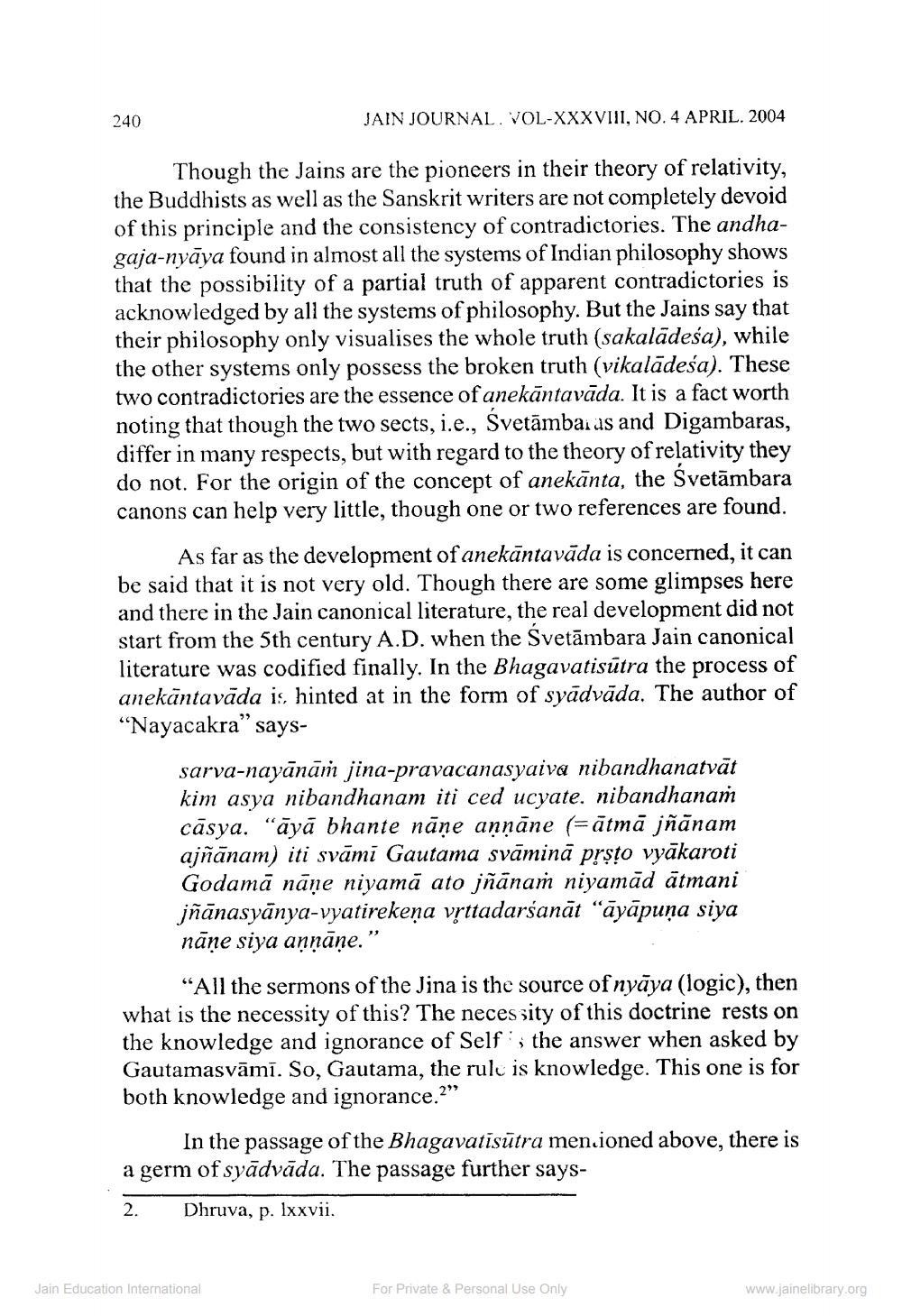________________
240
JAIN JOURNAL. VOL-XXXVIII, NO. 4 APRIL. 2004
Though the Jains are the pioneers in their theory of relativity, the Buddhists as well as the Sanskrit writers are not completely devoid of this principle and the consistency of contradictories. The andhagaja-nyaya found in almost all the systems of Indian philosophy shows that the possibility of a partial truth of apparent contradictories is acknowledged by all the systems of philosophy. But the Jains say that their philosophy only visualises the whole truth (sakalādeśa), while the other systems only possess the broken truth (vikalādeśa). These two contradictories are the essence of anekāntavāda. It is a fact worth noting that though the two sects, i.e., Svetambaas and Digambaras, differ in many respects, but with regard to the theory of relativity they do not. For the origin of the concept of anekānta, the Svetambara canons can help very little, though one or two references are found.
As far as the development of anekāntavāda is concerned, it can be said that it is not very old. Though there are some glimpses here and there in the Jain canonical literature, the real development did not start from the 5th century A.D. when the Svetambara Jain canonical literature was codified finally. In the Bhagavatisūtra the process of anekāntavāda is hinted at in the form of syādvāda. The author of "Nayacakra" says
sarva-nayānāṁ jina-pravacanasyaiva nibandhanatvāt kim asya nibandhanam iti ced ucyate. nibandhanam casya. "aya bhante nane anṇāne (=ātmā jñānam ajñānam) iti svāmi Gautama svamina prṣto vyākaroti Godamā nāne niyama ato jñānam niyamad ātmani jñānasyanya-vyatirekeņa vṛttadarśanāt "āyāpuṇa siya nāṇe siya anṇāṇe."
"All the sermons of the Jina is the source of nyaya (logic), then what is the necessity of this? The necessity of this doctrine rests on the knowledge and ignorance of Self, the answer when asked by Gautamasvāmi. So, Gautama, the rule is knowledge. This one is for both knowledge and ignorance.?"
In the passage of the Bhagavatisūtra men.ioned above, there is a germ of syādvāda. The passage further says
2.
Dhruva, p. lxxvii.
Jain Education International
For Private & Personal Use Only
www.jainelibrary.org




